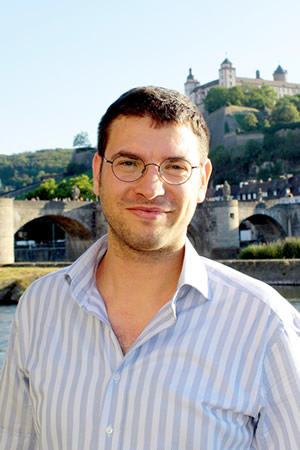Dr. Milan GerovacBy Dr. Natoya Peart  Dr. Milan Gerovac is a postdoctoral researcher in the group of Prof. Jörg Vogel at the Helmholtz Institute for RNA-based Infection Research and the Julius-Maximilians-University in Würzburg, Germany. An aficionado of small non-coding RNAs, Dr. Gerovac is developing tools and methods to discover new RNA-binding proteins that serve as hubs for RNA-based regulatory networks in prokaryotes. Dr. Gerovac hails from Croatia and completed his undergraduate and doctoral studies at Goethe University Frankfurt, Germany. As an undergraduate, Dr. Gerovac started his scientific journey with a diploma thesis in protein engineering under the guidance of Prof. Robert Tampé, whom he had met in lectures and at a biochemical conference in Frankfurt. Following that experience, Dr. Gerovac continued his graduate work with Prof. Tampé, and investigated the molecular mechanism of ATP-binding cassette (ABC) systems that occupy ribosomes, thereby stepping into the world of RNA biology. He further developed his interest in RNA biology within the Collaborative Research Centre 902 in Frankfurt devoted to understanding the molecular principles of RNA-based regulation, and through collaboration with the research group of Prof. Roland Beckmann at the Gene Center Munich, which lead to the elucidation of the 40S–ABCE1 post-splitting complex structure.
During his training, Dr. Gerovac often used the yeast as a model system and consequently developed an expertise in yeast genetics. Dr. Gerovac credits Dr. Peter Kötter for his scientific inspiration on the versatility of yeast as a model organism.This experience leads Dr. Gerovac to advise prospective graduate students to be open to “stepping into a new model or organism, or head for an alternative way of solving a question, as there may be a reason why the ones that are currently applied haven’t worked out so far or are very laborious”.He has embodied this advice in his own career and during his postdoctoral training he transitioned to understanding the regulation of RNAs in prokaryotes. In prokaryotes, the lack of a poly(A) tail and the metabolization of nucleotide analogs for labeling add an additional challenge to the application of global approaches to study the diversity of RNAs and RNA-binding proteins and their impact on cellular physiology. Consequently, to interrogate the RNA-protein complexome he profited from application and optimization of different strategies, e.g. RNase sensitive gradient fractionation (GradR), which has recently been published in RNA. Dr. Gerovac explained his motivation to join the Vogel lab: “I just got fascinated by the idea to start with a blank page and through sequencing methods derive coding elements, proteins, and, in the end, regulatory networks.” Dr. Gerovac is passionate about science and enjoys the collaborative nature of science. He recalls with fondness internship opportunities he had in the lab of Prof. Blanche Schwappach in Manchester, England and of Prof. Rachel Green in Baltimore, USA. These opportunities not only gave him exposure to the different scientific cultures, but also provided the opportunity to broaden his knowledge, refine his skillset, and reinvigorate his love for science. His travels also allowed Dr. Gerovac to indulge in non-scientific pursuits. Outside of the lab, Dr. Gerovac can be found walking in the downtown areas of large cities, enjoying the bustling environment. Dr. Gerovac’s favorite RNAs are small RNAs, and his favorite article from RNA is “Translation of poly(A) tails leads to precise mRNA cleavage” (Guydosh and Green 2017). You can follow Dr. Gerovac on twitter @Milan_Gerovac |
